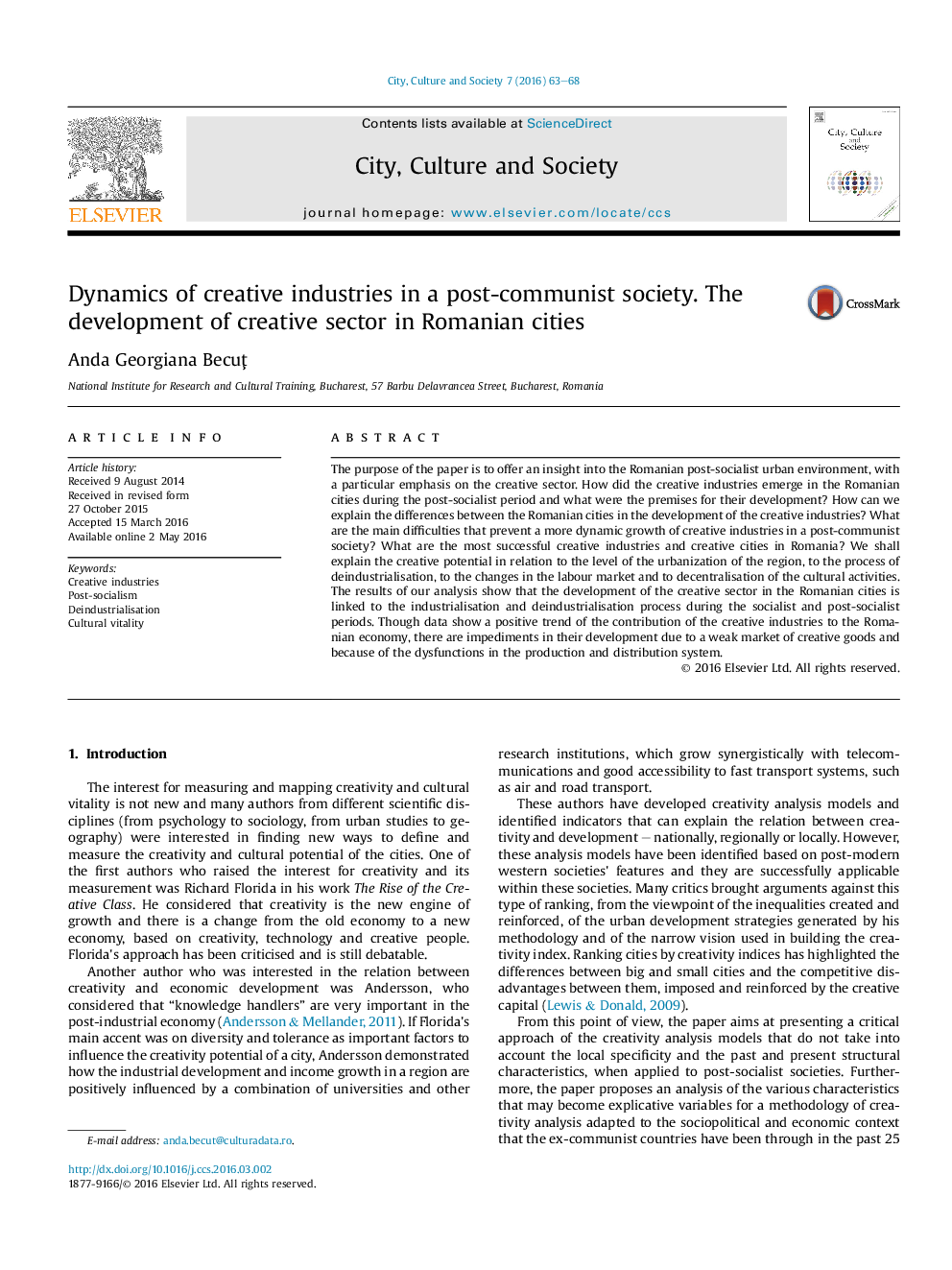| Article ID | Journal | Published Year | Pages | File Type |
|---|---|---|---|---|
| 5048187 | City, Culture and Society | 2016 | 6 Pages |
â¢The differences in statistical data methodologies affect the mapping of creativity.â¢The post-socialist context should be used as explicative variable.â¢The urbanisation and de-industrialisation are important explicative variables.â¢There is a human resources crisis in the creative industries in Romania.
The purpose of the paper is to offer an insight into the Romanian post-socialist urban environment, with a particular emphasis on the creative sector. How did the creative industries emerge in the Romanian cities during the post-socialist period and what were the premises for their development? How can we explain the differences between the Romanian cities in the development of the creative industries? What are the main difficulties that prevent a more dynamic growth of creative industries in a post-communist society? What are the most successful creative industries and creative cities in Romania? We shall explain the creative potential in relation to the level of the urbanization of the region, to the process of deindustrialisation, to the changes in the labour market and to decentralisation of the cultural activities. The results of our analysis show that the development of the creative sector in the Romanian cities is linked to the industrialisation and deindustrialisation process during the socialist and post-socialist periods. Though data show a positive trend of the contribution of the creative industries to the Romanian economy, there are impediments in their development due to a weak market of creative goods and because of the dysfunctions in the production and distribution system.
